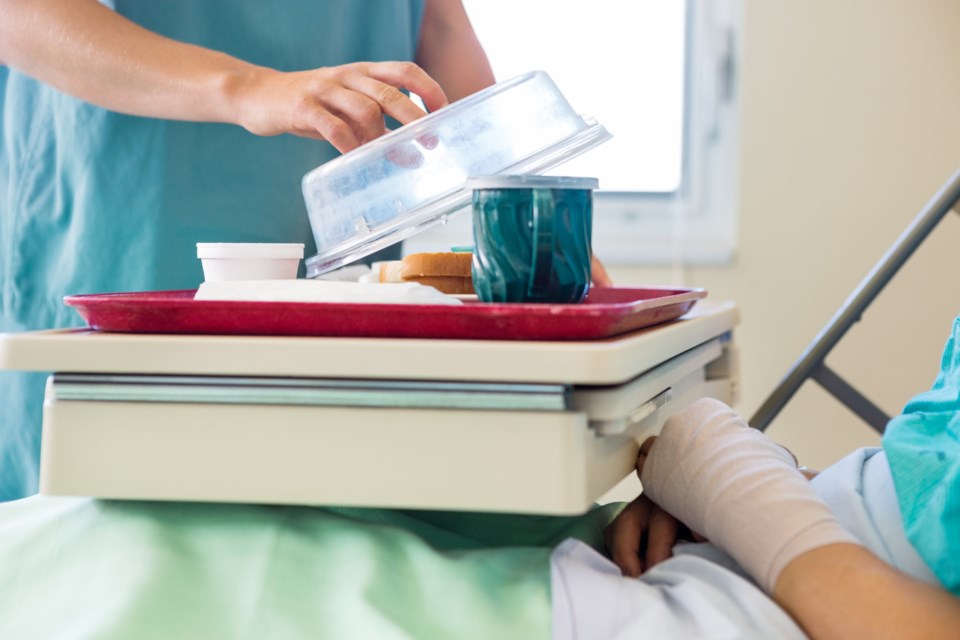In an era of superfoods and healing your body by nutrition, it’s beyond time to talk about hospital food.
Think back to the last time you, or someone you love, was in hospital. Now think of the beige tray. You can smell that smell. Never is anyone excited about lifting that lid.
Hospital food is brutal.
Inspiration for this column comes from the social media of a good friend of mine. One of my all-time favourite “work friends” is one of Canada’s most beloved and respected chefs, Ned Bell.
If you follow me on social media, you’ve likely seen the hashtag #TeamKate. Kate Colley is a much-loved marketing and PR maven, and her battle against a vicious form of breast cancer has our entire community sending strength to her.
Kate being Kate, she’s shared from the beginning — from diagnosis we’ve joined her very real journey. Chemo, radiation and, most recently, epic surgery. Her husband is the incredible force of nature that is Chef Bell.
You might be saying to yourself; “of course a CHEF thinks hospital food is subpar,” but wait, here’s what Ned posted on Instagram this weekend, word-for-word:
“Can we talk about the food at hospitals? Like, Holy #x/$!zv! It’s beyond inexcusable. We all know how important food is in wellness, prevention, recovery, Real Food Heals. How can we feed people the lowest quality food when they need the absolute best? Why isn’t food the main focus for someone’s recovery journey along with medical care, mental health, pain management, physiology, etc.?”
This got me thinking how we are so wrapped up in the campaign platform topics and arguments around in-fighting this longstanding problem persists.
Shouldn’t we shine a light on what can help people in the immediate?
We have all been at a bedside, or in hospital, looking at the tell-tale food tray and gagging. The smell alone can turn your stomach. It’s gross. There is little, if any, nutrition involved – nothing fresh, never mind comfort.
Almost daily we see headlines on how nutrition can improve quality of life, or even heal — so why don’t we have nutrition as a basis for our healthcare system?
Hospital food has survived in some sort of space-time-rift that dates back to the ‘50s. Surely technology has evolved to improve this. What will it take to see government make an investment in fixing this broken process of processed food stuff?
The reported budget, per patient meal, is $8 a day. Somewhere these numbers do not add up. For that amount of money at cost, there should be nutrient-rich and healthy food, but instead it’s often white bread and waterlogged frozen veg, all but unrecognizable.
Patients lucky enough to have family support often have outside or homemade food brought to them — but those who are going it alone are left to recuperate eating subpar meals.
Undernourished patients are at higher risk of developing infections, pressure sores, pneumonia and falling, not to mention take far longer to recuperate in hospital. This isn’t rocket science.
In his post, Ned references something that really gave me food for thought:
“With all due respect to our health care system and all the wonderful people who give it their all everyday…I can’t imagine the food waste that goes on in healthcare. Of the countless meals we received, most were not consumed, mainly because it wasn’t what I wanted to feed my patient. I have to think I’m not alone in this thought.”
We need to get our collective heads together and find new and innovative ways to help patients in hospital recover quickly via vital nutrition. While there have certainly been attempts to improve things in cafeterias at some B.C. Hospitals by the NDP government, it feels like it’s not urgent enough. Let’s get some vitamix action?
Ned, you are not alone.
Jody Vance is a born and raised Vancouverite who’s spent 30 years in both local and national media. The first woman in the history of Canadian TV to host her own sports show in primetime, since 2011 she’s been working in both TV and radio covering news and current affairs.



